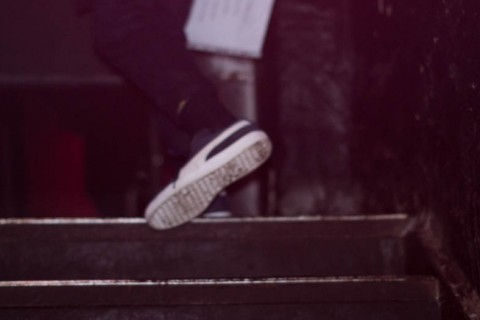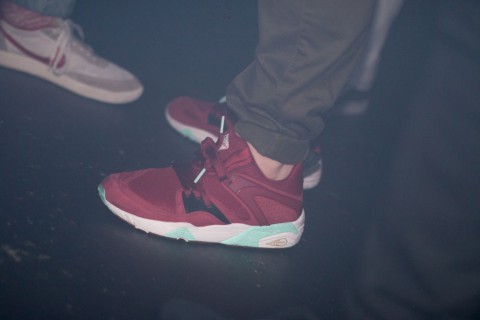
Starting off documenting punk and hardcore shows in his hometown of Gisborne, New Zealand, Ben Clement moved to Melbourne to pursue his passion of photography. Five years later, he has established himself in Australia and beyond, shooting for some some of biggest names in the game. Now, Ben has taken his art to a whole new level with the debut of his publication, Good Sport, a magazine he and his friends created from scratch, encompassing design, photography, and writing to appeal to a “new generation” of sports readers – with a DIY nod to his roots.
You started off photographing music shows in your hometown, do you find there are a lot of parallels between capturing music and sport?
The photographic principals are the same and I’ve always been looking to capture a moment that sticks out to me, which has helped define my style. I think photographing a lot of punk and hardcore growing up helped me to look for different perspectives which I now adapt into sport
What kind of photography is your mother into?
She appreciates a lot of work. I would say a lot more photojournalism is what she would be captured by.
Do you find her work influences yours?
One hundred percent. Having her work engrained into me as a child growing up was a big catalyst to where I am now. I look at her work now and am truly inspired by it.
At what point did you realise you wanted to pursue photography as a career?
I never really knew if it was going to be a career but I knew from a pretty early on stage it’s all I wanted to do. I knew I didn’t want to have a boss or a “normal” job.
Do you think that creatives are apprehensive to pursue their passion due to lack of money and demand? What made you jump that risk?
Yeah I believe so. It’s a very daunting thing to do and our generation likes to be comfortable – plus we live in a hemisphere that is built up on tall-poppy syndrome, so any time we look to take that risk there is always someone there to cut you down. I got to a point where I was cutting hours down at my job and thought to myself, “I can either keep doing this and have this safety net of income but be really unhappy or I can just take the risk and see what happens”. But in saying “see what happens”, I mean that I work my ass off and hustle and do everything I can to shoot, learn and earn some money. I hit the ground running and within two months of quitting my job, I was in Europe on assignment for three months.
What kind of reflections of your roots do you see in your photography?
I would say I am a product of my roots, and I would say everyone is. It just so happens that as a visual artist, I can show my roots in various different ways which is exciting.
How long has Good Sport been in the works?
Good Sport has been in the works since early 2014. A long process of refining to make sure it was exactly right.
What sets it apart from other sports publications?
I would say that is up to the reader to decide but from our view Good Sport is a print publication that reinvents the classic sports magazine for a new, engaged and creative audience. It’s a fresh take on sporting culture and journalism from a community of sports fans, not sports heads.
Over the past 20 years, sport has changed in the way that it is played, watched, supported and promoted. Yet sports journalism, publishing and commentary often lag behind—unwilling or unable to catch up with the way sport is perceived, viewed and experienced by new generations. Great design, immersive photography and quality writing have always had a place in sporting culture, but are rarely reflected in sports media. Good Sport presents the whole package: a timely, classic, thoughtful publication that creatively taps into the aesthetic and intellect of a new breed of sports fan.
What kind of challenges did editing your own magazine present?
Literally every kind. It takes a lot of time and that can be frustrating when all you want is your magazine to be out in the world. It’s also hard as I have not been an editor previously on this scale, so it was a huge learning curve.
What kind of extra value do you take from DIY projects like the magazine?
I would say the value is really long-lasting. Something like this won’t fade. When you can collaborate and use your friends’ help on projects, when you can use all your built up skill from over the years, it’s a cool feeling when you have the final product knowing you and your friends created it from scratch.
Having worked in all corners of the world, how do you find your style shifts from country to country?
I wouldn’t say my style shifts but I would say my awareness changes. Certain places and environments have different effects on how I would approach shooting things.
Are you looking to move beyond Melbourne as your home-base?
Melbourne is a great home base. I enjoy travelling to different places for longer two or three month stints but Melbourne has everything and more.
Visit Puma

